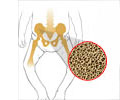Bread prepared using wheat flour from crops that were enriched with iron and zinc had better nutrient availability.

‘Biofortification, milling technique and baking enhance the bread with iron and zinc for fighting deficiencies.’





Now researchers report in ACS' Journal of Agricultural and Food Chemistry that this type of biofortification can boost micronutrients in bread, but other factors are also important. Anemia affects more than 30 percent of the world's population, and many cases are due to iron deficiency, according to the World Health Organization. Many of the same people are also affected by zinc deficiencies. These conditions can lead to impaired growth, neurological problems and even early death.
To combat deficiencies in iron and zinc, the nutrients can be applied to crops, so they will ultimately end up in food products. But few studies have investigated whether the common practice of foliar fertilization -- applying micronutrients to leaves -- has the desired result.
So Valentina Ciccolini and colleagues set out to determine how effective this strategy might be, using wheat as their study crop.
The researchers found that fertilizing an old variety of wheat crop increased its flour's concentration of zinc by more than 78 percent. Iron levels remained about the same regardless of whether varieties were biofortified; however, the old variety in the study had higher concentrations of the micronutrient than the modern variety.
Advertisement
Additionally, the process of bread-making slightly changed iron and zinc concentrations, but greatly boosted their bioavailability by 77 and 70 percent, respectively.
Advertisement
Source-Eurekalert














